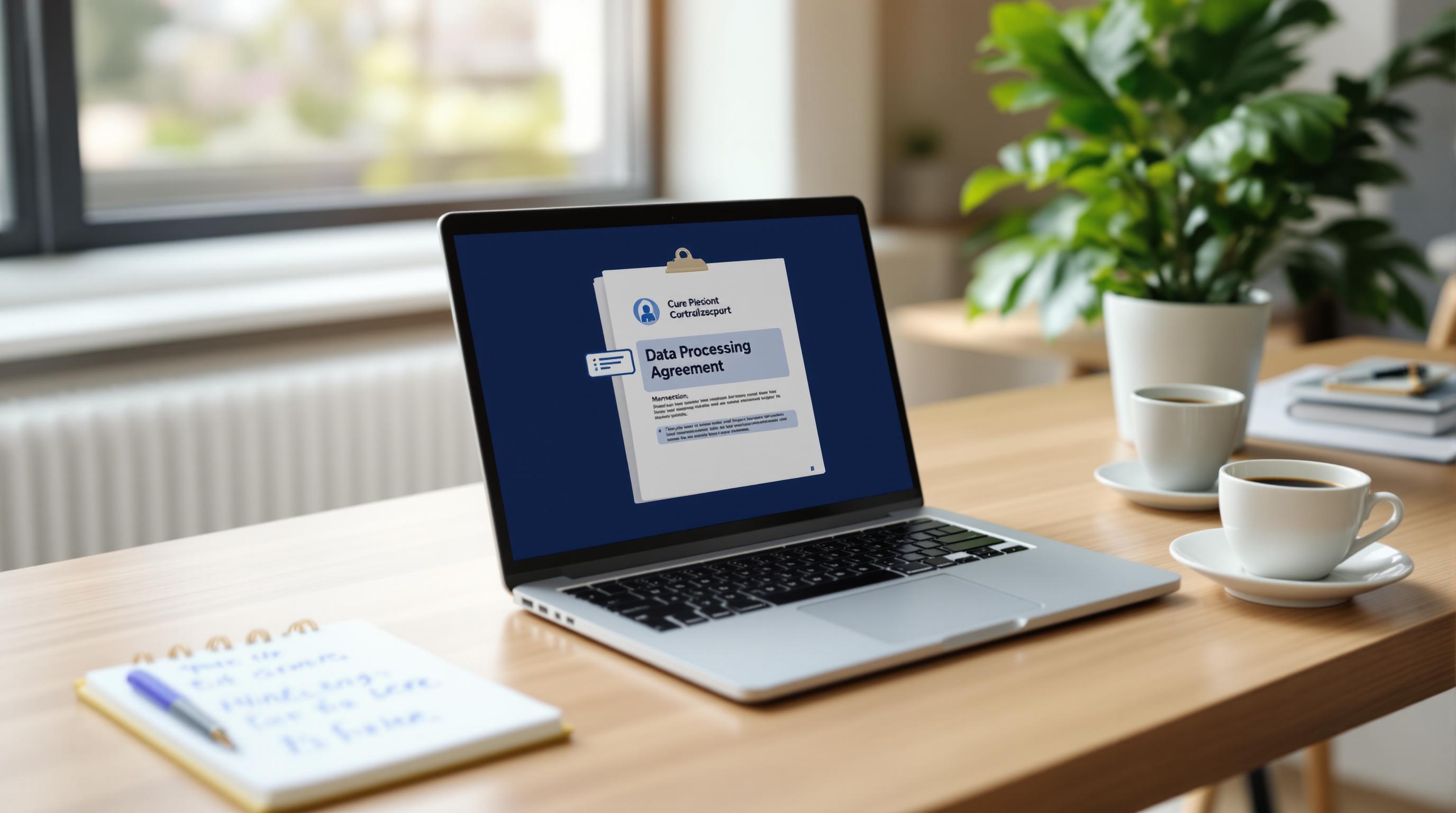Automating marketing funnels saves time, improves lead engagement, and streamlines conversions. Tools like HighLevel allow businesses to set up workflows that handle repetitive tasks, personalize communication, and track performance effectively. Here’s what you’ll learn:
- Why marketing funnels matter: They guide customers from awareness to purchase.
- Benefits of automation: Save time, prioritize leads, and personalize at scale.
- Key tools in HighLevel: Funnel builder, workflow automation, analytics, and payment integration.
- Steps to start: Define goals, use templates, automate follow-ups, track results, and optimize.
Build a Funnel in GoHighLevel Plus All Automations in 15 Minutes

Overview of HighLevel and Its Key Tools
What HighLevel Does
HighLevel streamlines funnel management by combining essential tools like lead capture, customer nurturing, and analytics into a single platform. By automating repetitive tasks while keeping interactions personalized, it helps businesses concentrate on strategy and growth. This all-in-one solution eliminates the need for multiple software tools, cutting costs and boosting efficiency.
The platform integrates tools to capture leads, nurture them, and drive conversions, creating automated and tailored customer journeys. This ensures consistent communication throughout the entire marketing funnel [1].
Top Features for Automating Funnels
HighLevel provides a range of tools designed to simplify marketing funnel automation. Here's a closer look at its standout features:
| Feature Category | Capabilities | Business Impact |
|---|---|---|
| Funnel Builder | Drag-and-drop tools for customizable, mobile-friendly funnels | Quick and easy funnel creation |
| Workflow Automation | Lead scoring, automated follow-ups, appointment scheduling | Saves time and improves responsiveness |
| Analytics & Tracking | Tracks performance metrics, conversions, and responses | Helps refine funnels with data-driven insights |
| Payment Integration | Built-in Stripe support for in-funnel payments | Makes payment collection seamless |
AI-powered tools ensure engaging and consistent communication with leads. The pipeline management feature helps track prospects through various stages of the buyer’s journey, making it easier to prioritize and convert leads [2].
For businesses that rely on appointments, HighLevel offers a calendar tool integrated with automated workflows. This allows for automatic appointment scheduling and follow-ups, reducing manual tasks for sales teams [2].
The platform’s page builder supports creating mobile-optimized lead capture, sales, and booking pages. These tools make it easier to attract leads and guide them through the nurturing process [1][2].
With these features, you can start building and automating your marketing funnels step by step, making the process efficient and effective.
sbb-itb-f031672
Step-by-Step Instructions for Automating Funnels
Step 1: Understand Your Audience and Set Goals
Use HighLevel's CRM to segment your audience and dig into their preferences. Define clear goals like increasing conversions, retaining customers, or generating leads [1].
With HighLevel's CRM, you can create detailed customer profiles by tracking:
- Pain points and needs
- Preferred ways of communication
- Demographics, behavior patterns, and past interactions
Step 2: Choose and Personalize a Funnel Template
Browse HighLevel's collection of funnel templates and pick one that fits your goals. Use the drag-and-drop builder to customize it to your needs [1].
| Template Type | Ideal For |
|---|---|
| Lead Generation | Forms for capturing leads, automated follow-ups |
| Sales Conversion | Payment systems, upsell opportunities |
| Appointment Booking | Calendar integration, reminders |
| Customer Reactivation | Personalized offers, behavior-based triggers |
Step 3: Set Up Automated Follow-Ups
Automated workflows help you maintain consistent and personalized communication [1][3].
Here’s how to set it up:
- Email Sequences: Create emails with valuable content and clear CTAs.
- SMS Alerts: Use SMS for urgent updates or direct engagement.
- Task Automation: Assign follow-up tasks to your team based on customer actions.
Step 4: Add Tracking and Analytics
Use HighLevel's tracking tools to measure how your funnel is performing. Focus on metrics like conversion rates, engagement levels, and acquisition costs to assess success.
Step 5: Test and Optimize Your Funnel
Experiment with different elements - email content, landing pages, CTAs, and follow-up timing - to see what works best. Use the data from your analytics to fine-tune the funnel [1][3].
Keep an eye on the results and make changes based on the data to improve conversion rates. Once your funnel is running smoothly, you’ll be ready to tackle any challenges that come with automation.
Common Issues in Funnel Automation and Fixes
Keeping Automation Workflows Simple
Overcomplicated automation workflows can hurt your funnel's effectiveness. Here's how to keep things straightforward using HighLevel:
| Issue | Solution | Impact |
|---|---|---|
| Too many decision points | Limit branches to 3-4 paths | Easier to track customer journeys |
| Overlapping campaigns | Combine similar workflows | Simplifies management |
| Excessive triggers | Focus on key conversion actions | Makes automation more predictable |
When designing workflows, take advantage of HighLevel's visual workflow builder. It helps you streamline processes and spot unnecessary steps early, avoiding potential headaches during implementation.
Once your workflows are simplified, the focus should shift to making them feel more personal and engaging.
Adding a Personal Touch to Automated Messages
Automation is great for efficiency, but it shouldn't feel robotic. HighLevel provides tools to make automated messages feel more human:
-
Dynamic Content Integration: Use CRM data to customize messages based on:
- Past interactions with your business
- Purchase history and preferences
- Behavioral patterns like clicks or website visits
- Segmentation-Based Messaging: Group your audience into segments and send messages that are relevant to each group.
- Trigger-Based Timing: Automate follow-ups for specific actions, such as viewing a pricing page, abandoning a cart, or approaching a subscription renewal date.
These strategies help keep your automation effective without losing the personal touch.
Conclusion: Boost Efficiency with HighLevel
Key Takeaways
HighLevel simplifies marketing funnel automation, allowing businesses to design effective, personalized customer journeys. By combining advanced automation features with intuitive tools, it helps reduce manual tasks while maintaining genuine connections with customers.
Here’s what HighLevel brings to the table:
- Simplified creation and management of funnels
- Personalized and consistent communication with customers
- Time and resource-saving processes
- Better lead nurturing and conversion tracking
By automating tasks like lead follow-ups and nurturing, HighLevel lets businesses concentrate on strategy while driving measurable results. Setting up your first automated funnel is made easy with these tools.
Getting Started with HighLevel
Start with a single funnel, monitor key metrics, and test workflows with a small audience segment. Use the results to refine and expand. HighLevel’s tools make it easy to create landing pages that integrate seamlessly with your workflows, improving lead capture. Its integration capabilities also connect your tools into one cohesive marketing system.
Focus on the basics, start small, and let data guide your strategy. This step-by-step approach ensures you get the most out of HighLevel while addressing your specific marketing needs.



